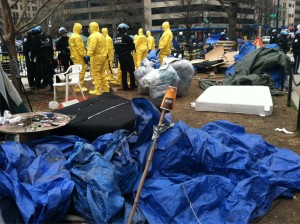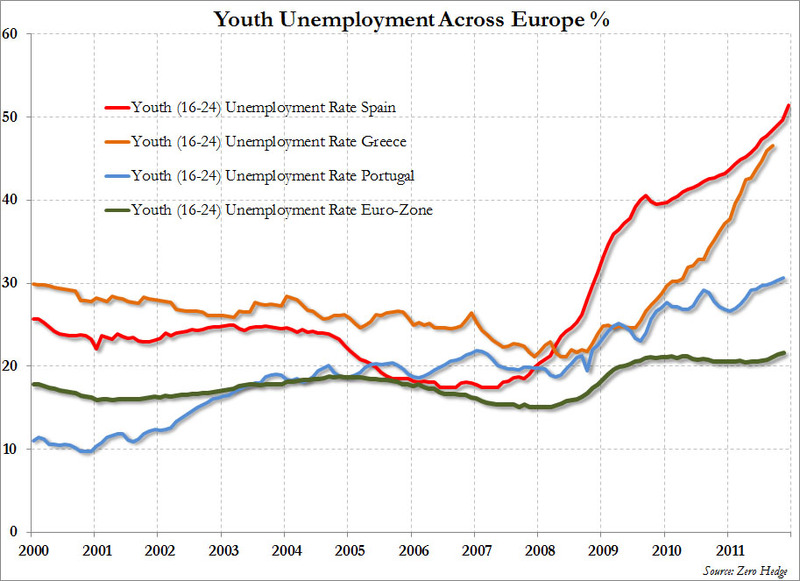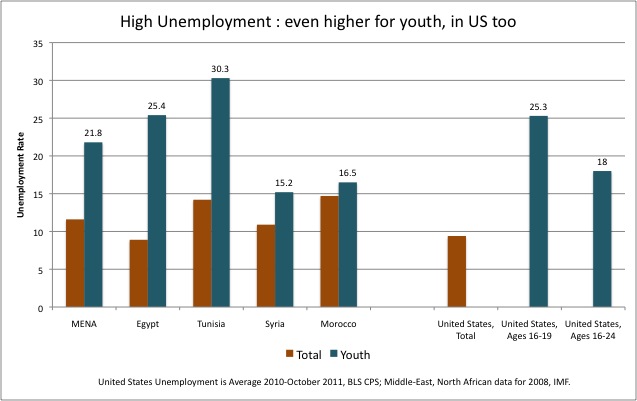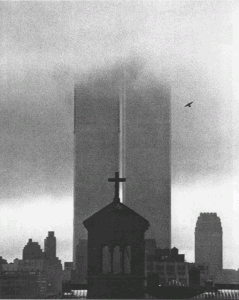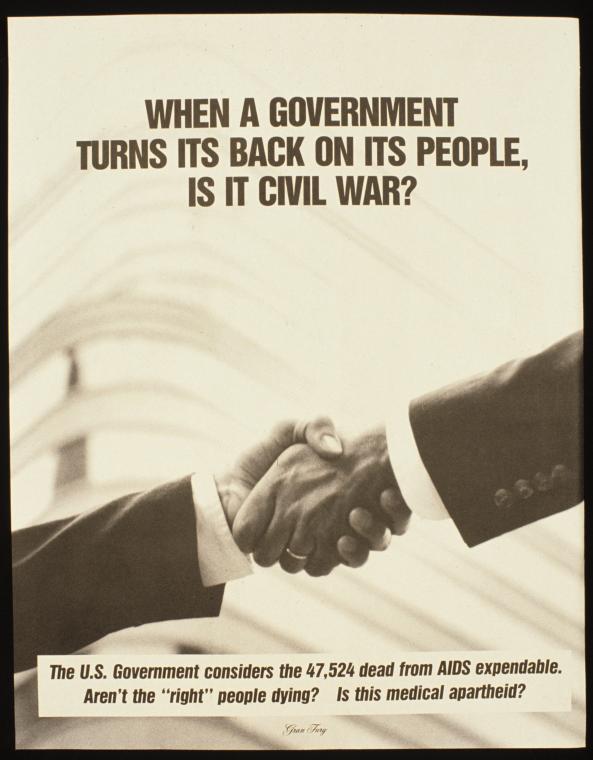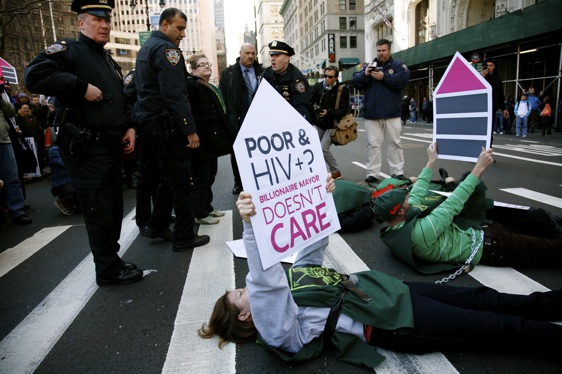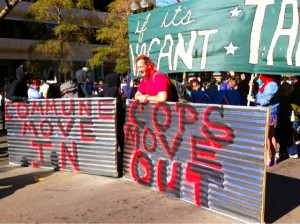If there is to be a new eugenics, it will return to a hierarchy of citizenship, in which some citizens are fully empowered members of the public and many others are not. In English jurisprudence, this latter condition is known as “civil disability.” It has kept those perceived as not equal to the standards of citizenship from enjoying the right to vote or even the right to appear as a witness in a law case. It has applied to the enslaved, Jews and women. It still applies to minors and those designated insane. In the current optic of power, civil disability permits corporations to have the standing of people, while individual people are the objects of kettling, spraying, scanning and other forms of classification.
The very diversity and dis/ability of Occupy—even if widely considered insufficient within the movement—appears to add to the vengeful force of the reassertion of authority. Such bodies are not supposed to be able to make political choices but only to be the grateful recipients of Lifetime made-for-TV movies and to supply “meaningful” roles for able-bodied actors to win Oscars. It is as if authority says, if you will not accept the ways we disable you once, then we will do it again. That is to say, disability is not a physical condition but a social one: it is the lack of accommodations that makes a person in a chair have difficulty negotiating space not an inherent incapacity. This disabling is now extended to all suspect bodies: which is often everyone.
I have not flown since Occupy began, unusually for someone who travels a lot. Today I had to submit to being kettled by the TSA at JFK airport in order to wait for the privilege of partially undressing and then being scanned while standing with my hands raised over my head by who knows what purportedly safe form of radiation. It was presumably designed to make people feel powerless and it does. While hygiene was the key to the original eugenics and still plays a significant role, the new eugenics takes its energy from the discourses of safety.
Later in the overcrowded container called “coach,” a fellow passenger was harangued by a flight attendant because the straps of his backpack, which he was forced to stow “under the seat in front” because no other space was available, intruded by a matter of two inches into our seating space. If we had to evacuate, we were told, we might get entangled. I rearranged my feet and the emergency was over because we had displayed sufficient passivity. As the Italian cruise ship disaster showed, actual safety has nothing to do with any of this—passengers were sent back to their cabins as the boat took on water.
In such situations, any challenge to the “move on” authority of the police results in immediate arrest, deportation or deplaning. (By the way, is there an uglier world than “deplane”? One candidate would the use of the term “designated receptacle” to mean bin.) The demonstrators at Move In Day in Oakland were repeatedly hailed to “submit to arrest.” That is, it is not enough that you be arrested. You must submit to it, accept the authority by which you are arrested and reconfigure your own practice from civil disobedience to crime.
Traditional eugenics and civil disability were not at all interested in what the disabled citizen thought of themselves because by definition their thoughts were not important. If it matters so much to the new agents of civil disability that we submit to being “disabled” by them, it is because they have learned their trade from counterinsurgency. Under the Petraeus doctrine of counterinsurgency, it was not enough for the occupying power to be able to dominate the population. That population must “actively and passively” consent to being ruled. So you must not only go through the security checkpoint, you must accept that the checkpoint is there for your security and is therefore right. It doesn’t work and what’s more it has never worked.
Interestingly, the military themselves have abandoned the counterinsurgent fantasy. They are withdrawing regular troops from Afghanistan, having abandoned Iraq to pick things up where they left off in about 2007. Now ubiquitous anti-terrorism is the goal, with targeted missions being carried out by unmanned aerial vehicles or special operations troops. Just as the brief triumph of counterinsurgency rested on the apparent success of the “surge” in Iraq, so is this new paradigm clearly based on the bin Laden assassination. The administration is impervious to anxieties about the lack of due process of those targeted or even the “collateral damage” done to the by-standers. All of these people, whether by virtue of being insurgents or failing to remove themselves from proximity to insurgents, are under the prescription of civil disability.
Just so, a TSA agent said to us a while ago, “you have no rights here.” Just so, police launch a “surge” in the Wind City Reservation to reduce crime statistics. Just so, you may be evicted from public space because you are not considered part of the public or expelled from federal space because you are not a fully-fledged citizen. Buttressing the entire process is the longest-running process of civil disability in the United States, the mass incarceration of African-American and minority populations. Over two million people are part of the prison-industrial system that so patently discriminates by ethnicity that Michele Alexander has called it “the new Jim Crow.” More exactly, one might say it was the old Jim Crow. As Angela Davis has shown, the penitentiary and work-lease systems were devised as part of As “felons,” many of the released lose civil rights.

